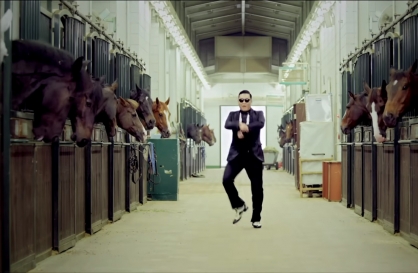Most Popular
Korean History
-
1
2014 ferry disaster left scars that never healed

-
2
In 2012, K-pop makes leap from 'Gangnam' to the world

-
3
Deadly sinking of Navy ship in 2010 marks worst postwar military disaster

-
4
In 2008, Korea's National Treasure No. 1 went down in flames

-
5
In 2005, science world’s biggest scandal unravels in Seoul

[Korean History] In 2004, serial murderer with goal to kill 100 was stopped at 20
Nearly two decades after killing spree, Yoo Young-chul, Korea's first publicly identified psychopath, lives on as death row inmate
By Jung Min-kyungPublished : Nov. 8, 2023 - 14:43
In the summer of 2004, South Korea was jolted by one of the most gruesome crime stories the country had ever witnessed.
Driven by hatred for the rich and women, Yoo Young-chul committed 20 murders before he was apprehended, a fraction of his self-imposed mission to kill 100.
The serial killer’s dramatic capture, along with shocking details of his crimes, which involved claims of cannibalism and dismemberment, left a lasting impact on the nation’s collective memory.

The chilling saga inspired several movies and documentaries, including the 2008 film “The Chaser,” directed by then-novice Na Hong-jin, and Netflix’s 2021 documentary “The Raincoat Killer: Chasing a Predator in Korea.”
Despite having been sentenced to death by hanging in June 2005, Yoo still lives in jail, as South Korea has not carried out any executions since 1997, making it "abolitionist in practice" on the death penalty, according to Amnesty International in May 2023.
Recent debates about resuming the most severe form of punishment have brought him back from fading memory. In September, Yoo, along with other death row inmates, was relocated to the Seoul Correction Center, which is equipped with an execution chamber.
Killing spree
Yoo’s killing spree began in early 2003. His first targets were a 72-year-old university professor and his wife, murdered in January 2003, according to a 2007 analysis of Yoo’s crimes by the Department of Forensic Medicine at Kyungpook National University.
The first four of his victims were murdered in their homes, after Yoo broke in using different types of weapons, including knives and hammers.
After the police expanded their investigation into a series of his earlier murders, he began to plot out a more discreet plan.

From March 2004, he specifically targeted female sex workers, calling their agencies to lure them to his home located in Mapo-gu, Seoul.
With a fake identification card and handcuffs purchased at a local market, he pretended to be a police officer, and when the women would arrive nearby his home, he would make them feel like they would get arrested if they refused to follow him into his home.
The victims were then killed in his bathroom. He then dismembered the bodies and even claimed to have eaten the flesh of some of his victims. Eleven of his 20 victims were female sex workers.
Serial killer with highest victim count
Pimps started to notice the alarming pattern of women employed under them going missing after heading out to work. They reported to the police the phone number Yoo had used to procure the women.
The front page of the July 19, 2004 edition of The Korea Herald is dedicated to depicting the arrest of Yoo.
The article titled “Suspected serial killer arrested” reads, “A man arrested for beating a masseuse confessed yesterday to a 10-month killing spree in which he murdered at least 20 people, including 11 women working in red-light districts and wealthy elderly people.”
It read that the suspect had escaped and was “on the run for 12 hours before being recaptured” by a police officer on patrol. An SBS report that covered the short-lived escape at the time said that he had escaped from the police station after the officers temporarily released him from his handcuffs when he showed signs of having a seizure.

A follow-up article by The Korea Herald published the same day said that Yoo had “confessed to 19 murders in nine months” and “has a deep hatred of wealthy people and women.” The article cited Yoo’s history of “a destitute childhood and several broken relationships with women.”
Police said Yoo also confessed to having considered killing his wife, but changed his mind for his son’s sake.
In an interview conducted shortly after his capture, Yoo said he was motivated by hatred of the wealthy. The majority of his victims, however, were either blue-collar workers or sex workers.
First publicly identified psychopath
Before Yoo, the concept of “psychopathy” was largely unfamiliar to the public in Korea.
Most believed that convicted murderers would have had a “reason” behind their crimes, such as financial motives or anti-social anger. Yoo’s case shattered such perceptions. It became pivotal for the field of criminal psychology in Korea and criminal profiling, introduced in Korea in 2001, gained more significance.

“Yoo was the reason that I officially used the term, ‘psychopath,’ in public for the first time,” Lee Soo-jung, a forensic psychology professor at Kyonggi University, said in a 2020 interview with KBS.
Of South Korea’s 59 living death row inmates, Yoo is by far the most infamous. That’s why his name is brought up again whenever there is a debate about what to do with the dormant death penalty system.
Several public opinion polls have shown that a majority of the public supports capital punishment in South Korea.
In a Gallup Korea poll of 1,000 Korean nationals aged 18 and older conducted last year, some 69 percent responded that the country should maintain or start carrying out the death penalty again. Some 23 percent of the respondents support its complete abolition.
Following Yoo’s relocation from Daegu Detention Center to the prison that has a functioning execution chamber, the Justice Ministry only said it was merely an “administrative move.”
But due to the number of murders and their seriousness, it is likely that Yoo would be among the first to be hanged, if South Korea were ever to resume executions.
"When South Korea was an active death penalty country, it used to carry out 20 to 30 executions en masse on a single day," Lee Woong-hyuk, a professor of criminal psychology at Konkuk University said.
He said the relocations of death row inmates could be a calculated move to signal that the current administration could resume the death penalty one day.








![[Today’s K-pop] Blackpink’s Jennie, Lisa invited to Coachella as solo acts](http://res.heraldm.com/phpwas/restmb_idxmake.php?idx=644&simg=/content/image/2024/11/21/20241121050099_0.jpg&u=20241121172748)














![[Today’s K-pop] Babymonster logs 100m views with ‘Drip’ music video](http://res.heraldm.com/phpwas/restmb_idxmake.php?idx=642&simg=/content/image/2024/11/22/20241122050051_0.jpg&u=20241122172213)